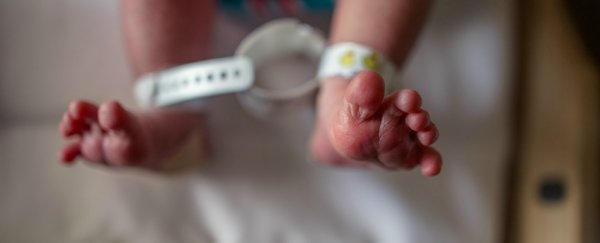For new mothers, eating their own (and child's) placenta has become a popular trend in the US and other western societies. And while it may seem unnecessarily gross, advocates of the practice – called placentophagy – claim a wide range of benefits, from protecting against postpartum depression to increasing milk production.
But just as the practice is becoming more common, the Centers for Disease Control and Prevention (CDC) is warning new mothers that placentophagy may put newborns at risk of infectious bacteria.
In theory, eating placenta makes sense. Placenta is chock-a-block full of essential vitamins, minerals, nutrients and postpartum hormones. But that doesn't necessarily mean that consuming it is beneficial.
Proponents often cite how common placentophagy is among other mammals, but practically no studies have explored the effects of this practice on humans. And the few studies that do exist provide no conclusive evidence that eating your own placenta is beneficial.
For instance, a study last year found that consuming placenta does not significantly improve the iron levels of new mothers, at least no more than other iron-rich foods, such as beef.
So, if eating your own placenta may or may not be beneficial, why not still give it a go?
Well, turns out it could risk the health of your newborn.
A new case report published by the CDC warns mothers their placenta supplements may be contaminated with infectious pathogens.
The report follows a mother in Oregon, who gave birth to a healthy baby in September of last year. A couple of days later, the infant was rushed to the neonatal intensive care unit and was successfully treated for a life-threatening blood infection called late-onset group B Streptococcus agalactiae (GBS) bacteremia.
Flash-forward five days, and the infant is back in hospital with a second case of GBS – a recurring infection.
The doctors were stumped. That is, until they discovered the mother was taking placenta pills that were packed not only with placenta powder, but also with GBS.
GBS doesn't usually cause infections in adults, but in a newborn's undeveloped immune system it can be treacherous.
The strain that the researchers found in the Oregon case was particularly virulent, allowing it to flood the baby's intestines, bloodstream, and potentially their blood brain barrier.
After running some labs, the researchers found the GBS strains in the pill were genetically identical to the GBS infection in the newborn.
This suggests the placenta capsules may have elevated the mother's GBS colony in her own intestine and/or skin, making it easier for the infection to then spread to the infant.
Currently, there are no existing standards for processing placenta for consumption. And the researchers of the CDC report believe this may be why the mother's placenta pills were contaminated.
The company that the mother had hired to make her placenta pills – unnamed by the CDC – had dehydrated her placenta at 46 – 71°C (115 – 160°F), before placing the powder into a couple hundred gelatin capsules.
The researchers theorise that this company's dehydration process may not heat the placenta long enough or at a high enough temperature to kill all pathogens present.
"The placenta encapsulation process does not per se eradicate infectious pathogens; thus, placenta capsule ingestion should be avoided," the researchers conclude.
"Clinicians should inquire about a history of placenta ingestion in cases of late-onset GBS infection and educate mothers interested in placenta encapsulation about the potential risks."
Until further research is conducted and more stringent standards for processing placenta are put into place, this is a practice that should probably be avoided.
The report was published in the CDC's Mordbidity and Mortality Weekly Report.
